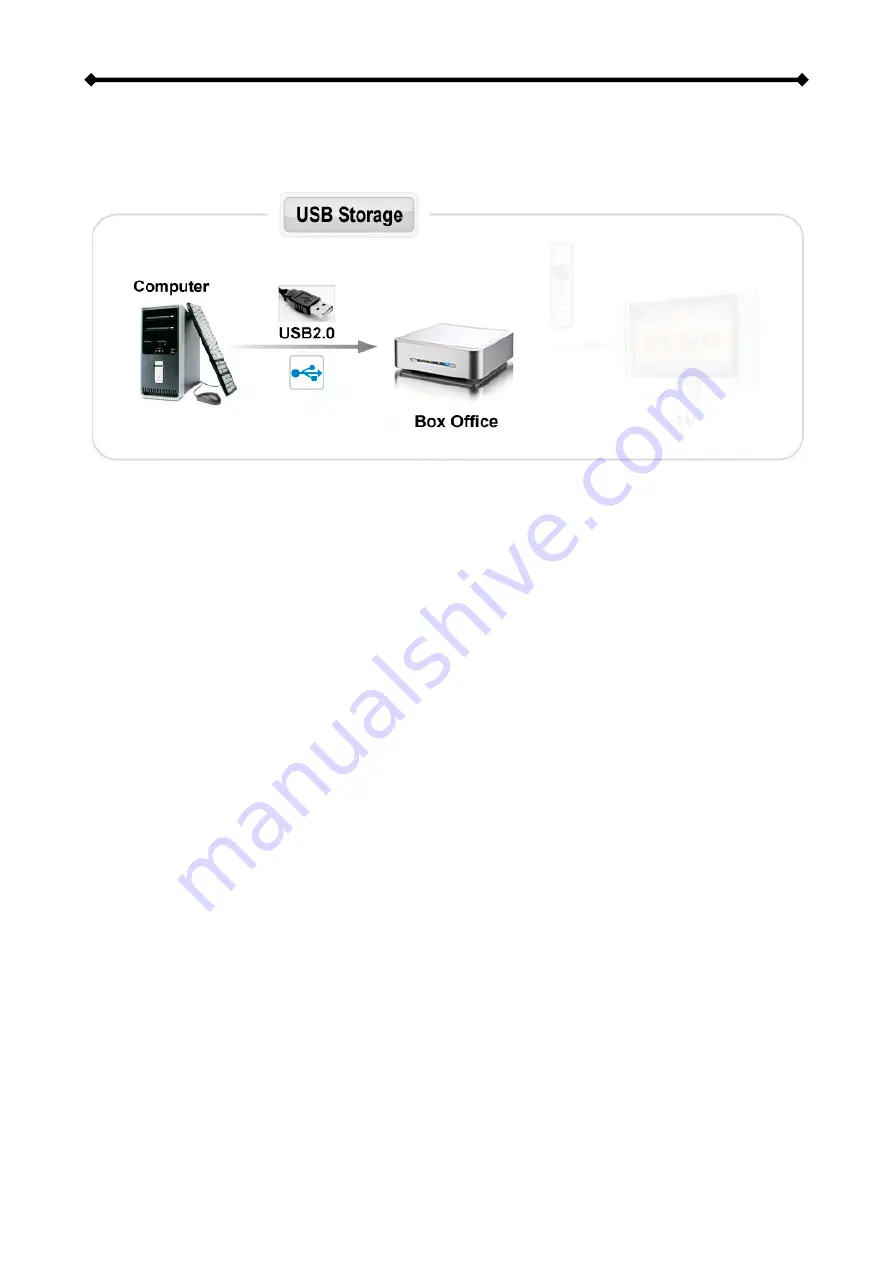
Box Office User Guide
USB Connection
The Box Office operates as a standard USB 2.0 mass storage device when connected to a
computer via USB. Use the included cable to connect your device to the computer system.
Always connect the USB cable to your computer first and
set the switch to PC
, before
you turn on the device. Your system will automatically recognise the Box Office as external
hard disk in which you then can copy any file(s) you want (music, movies, pictures, and/or
data).
It is strongly recommended to empty the “Recycle Bin” after your file(s) deletions to
free the HDD space.
The Box Office supports the following file formats: FAT32 (Windows & Mac) NTFS
(Windows), HFS+ (Mac). If your computer system does not have a USB 2.0 interface, but
only USB 1.1, you will receive a warning. You can still use the device with USB 1.1, but
with a slower performance level.
Note: You will always need the external power adapter when connected to the computer. If
the switch on the Box Office is set to TV, the device will not be recognised by the computer.
NONE of the prerequisite folders should ever be deleted or renamed, because your
Box Office uses these exact names as a reference to locate the respective files.
Inside these folders you can have any sub-directories that are convenient for you.
Firmware
- This is the folder in which you can copy the latest Box Office firmware files
when there is a new upgrade available.
Movies
- Store all your video clips and movies inside this folder.
Music
- Store all your music files inside this folder.
Pictures
- Store all your images and photos inside this folder.
Note: Media files stored in different locations will not be recognised by the media player
when it is connected to the TV.
To backup your files or to transfer data between different computers and platforms, you
may create as many new folders in the root directory as you like. These will not affect the
Box Office media player and also won’t be seen on the TV screen.
Page 12 / Chapter 2 - System Setup





























